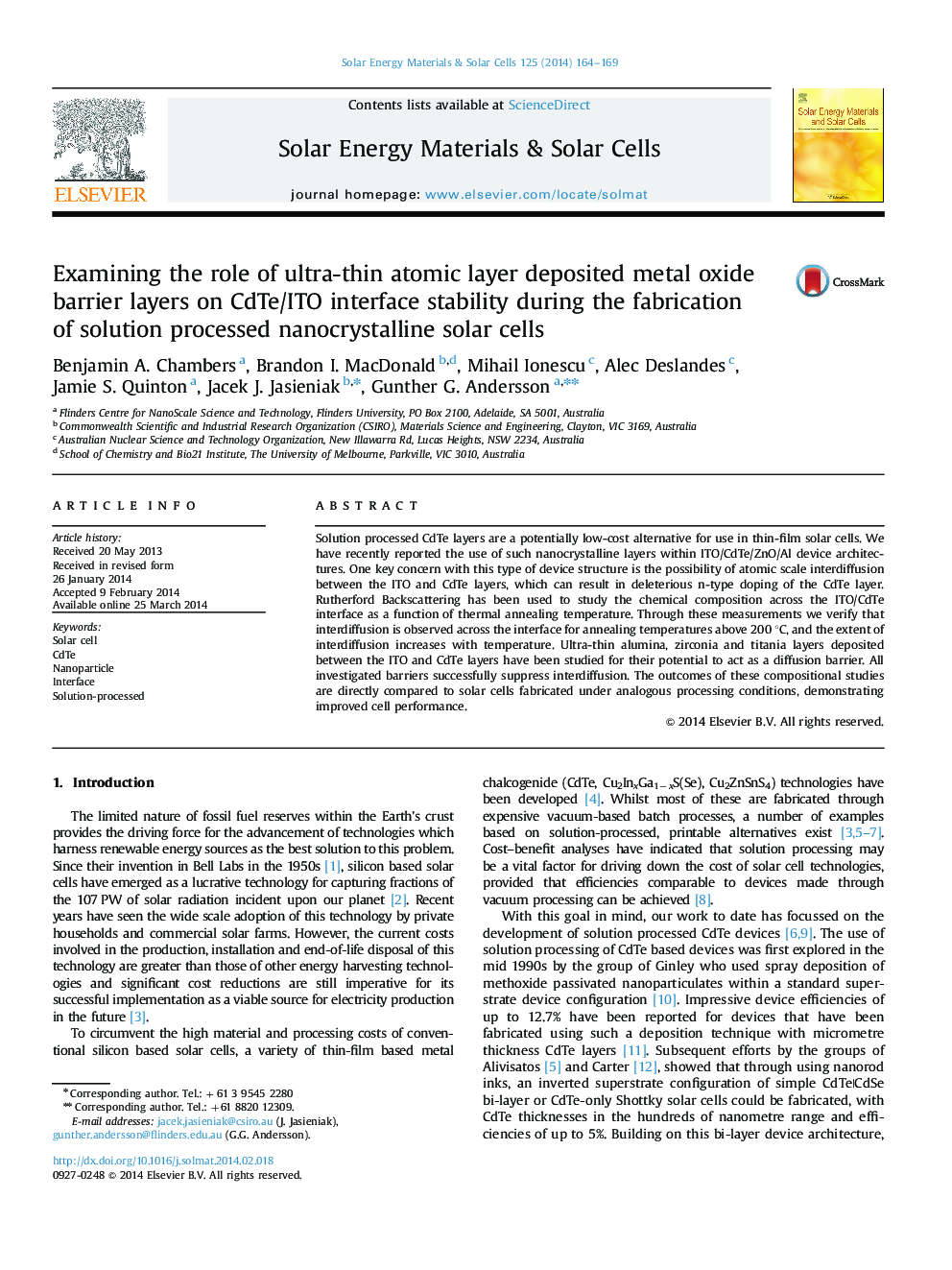| Article ID | Journal | Published Year | Pages | File Type |
|---|---|---|---|---|
| 78097 | Solar Energy Materials and Solar Cells | 2014 | 6 Pages |
•Solution processed CdTe solar cells show diffusion across the CdTe/ITO interface.•Diffusion across the interface is detrimental for the performance of the solar cells.•Metal oxide buffer layers at the CdTe/ITO interface eliminate diffusion.•Metal oxide buffer layers at the CdTe/ITO interface improve performance.
Solution processed CdTe layers are a potentially low-cost alternative for use in thin-film solar cells. We have recently reported the use of such nanocrystalline layers within ITO/CdTe/ZnO/Al device architectures. One key concern with this type of device structure is the possibility of atomic scale interdiffusion between the ITO and CdTe layers, which can result in deleterious n-type doping of the CdTe layer. Rutherford Backscattering has been used to study the chemical composition across the ITO/CdTe interface as a function of thermal annealing temperature. Through these measurements we verify that interdiffusion is observed across the interface for annealing temperatures above 200 °C, and the extent of interdiffusion increases with temperature. Ultra-thin alumina, zirconia and titania layers deposited between the ITO and CdTe layers have been studied for their potential to act as a diffusion barrier. All investigated barriers successfully suppress interdiffusion. The outcomes of these compositional studies are directly compared to solar cells fabricated under analogous processing conditions, demonstrating improved cell performance.
Graphical abstractFigure optionsDownload full-size imageDownload as PowerPoint slide
